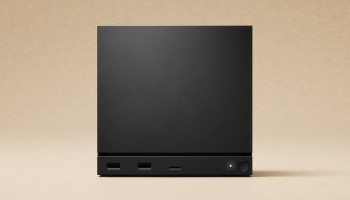
In the area of smartwatches, Samsung holds a prominent position, offering a diverse array of options tailored to varying preferences and requirements. The most recent additions to their lineup are the Galaxy Watch 4 and Galaxy Watch 5, both running on the innovative Wear OS 4 platform co-developed by Samsung and Google.
But when it comes to choosing between these two wrist companions, which one is the right fit for you? Let's delve into a comprehensive comparison of Samsung Galaxy Watch 4 vs. 5; their features, specifications, and price points.
Samsung Galaxy Watch 4 vs. Galaxy Watch 5
Design and display
The Galaxy Watch 4 and Galaxy Watch 5 share a common design language, characterized by a circular display, two side buttons, and a rotating bezel for intuitive navigation. Nonetheless, subtle distinctions set them apart. The Galaxy Watch 4 boasts a sleek and lightweight aluminium body, while the Galaxy Watch 5 offers enhanced durability with a scratch-resistant sapphire crystal display and a robust armour aluminium frame. Additionally, the Galaxy Watch 4 offers two variants: a standard model with a smooth bezel and a Classic model featuring a ridged bezel.
| Feature | Galaxy Watch 4 | Galaxy Watch 5 |
| Design | Aluminum body | Sapphire crystal display and armour aluminium frame |
| Display size | 1.2-inch or 1.4-inch | 1.19-inch or 1.36-inch |
| Display resolution | 396 x 396 or 450 x 450 pixels | Same as Galaxy Watch 4 |
| Processor | Exynos W920 | Same as Galaxy Watch 4 |
| RAM | 1.5GB | Same as Galaxy Watch 4 |
| Storage | 16GB | Same as Galaxy Watch 4 |
| Battery capacity | 247mAh or 361mAh | 284mAh or 410mAh |
| Battery life | Up to two days | Same as Galaxy Watch 4 |
| Charging speed | Wireless (Qi) | Up to 45% in 30 minutes with wireless (Qi) |
| Sensors | Samsung BioActive sensor (optical heart rate, ECG, BIA), accelerometer, gyroscope, barometer, geomagnetic sensor, ambient light sensor | Same as Galaxy Watch 4 plus thermometer sensor |
| Health and fitness features | Heart rate, blood pressure, blood oxygen level, body fat percentage, skeletal muscle mass, body water percentage, basal metabolic rate, body mass index, electrocardiogram, sleep tracking (with snoring detection), cycle tracking (with fertility algorithm), over 90 exercises (with auto-detection), GPS/GLONASS/GALILEO/BDS | Same as Galaxy Watch 4 plus temperature sensor for advanced cycle predictions |
| Software | Wear OS powered by Samsung’s One UI Watch interface | Same as Galaxy Watch 4 |
| Compatibility | Android smartphones running Android 6.0 or higher with at least 1.5GB of RAM | Same as Galaxy Watch 4 |
| Connectivity | Bluetooth 5.0, Wi-Fi, NFC, LTE (optional) | Same as Galaxy Watch 4 |
| Price (Bluetooth) | $249.99 (40mm) / $279.99 (44mm) / $349.99 (Classic) / $379.99 (Classic) | $279.99 (40mm) / $309.99 (44mm) / $499.99 (Pro) / $529.99 (Pro) |
| Price (LTE) | $299.99 (40mm) / $329.99 (44mm) / $399.99 (Classic) / $429.99 (Classic) | $329.99 (40mm) / $359.99 (44mm) / $549.99 (Pro) / $579.99 (Pro) |
Both watches are available in two sizes: 40mm and 44mm for the Galaxy Watch 4, and 42mm and 46mm for the Galaxy Watch 5. Display sizes also differ slightly: the Galaxy Watch 4 features a 1.2-inch or 1.4-inch Super AMOLED screen with resolutions of 396 x 396 or 450 x 450 pixels, respectively. The Galaxy Watch 5 boasts a slightly larger 1.19-inch or 1.36-inch Super AMOLED screen with identical resolutions to the Galaxy Watch 4.
Both watches offer an always-on display feature, Corning Gorilla Glass DX+ protection (excluding the sapphire crystal on the Galaxy Watch 5), and support a wide array of watch faces and bands.
Health and fitness features
A prominent selling point for both watches lies in their comprehensive health and fitness capabilities. Equipped with a Samsung BioActive sensor combining an optical heart rate sensor, an electrical heart sensor (ECG), and a bioelectrical impedance analysis sensor (BIA), these watches can measure a multitude of health metrics. These include heart rate, blood pressure, blood oxygen levels, body fat percentage, skeletal muscle mass, body water percentage, basal metabolic rate, body mass index, and electrocardiograms.
Both watches also feature an accelerometer, gyroscope, barometer, geomagnetic sensor, and ambient light sensor. The Galaxy Watch 5 adds a thermometer sensor capable of monitoring skin temperature during sleep.
Tracking over 90 different types of exercises, including running, cycling, swimming, yoga, and golf, both watches can automatically detect and record six common workouts: walking, running, cycling, rowing, elliptical training, and dynamic workouts. Additionally, GPS, GLONASS, GALILEO, and BDS support ensure precise location tracking.
Both watches can monitor sleep quality, providing insights for improvement. They track sleep stages (awake, light, deep, REM), and snoring patterns (when paired with a Galaxy smartphone), and offer personalized sleep scores. Notably, the Galaxy Watch 5's temperature sensor provides advanced cycle predictions for women monitoring their reproductive health.
Battery life and performance
Powered by the same Exynos W920 chipset, a dual-core processor clocked at 1.18GHz, both watches share identical RAM (1.5GB) and internal storage (16GB). However, battery capacities vary the Galaxy Watch 4 houses a 247mAh or 361mAh battery for the smaller and larger models, respectively, while the Galaxy Watch 5 boasts a slightly larger battery of 284mAh or 410mAh for the smaller and larger models, respectively.
According to Samsung, both watches can endure up to two days on a single charge with typical usage, though this may fluctuate based on settings, feature usage, network conditions, and more. Both support wireless charging through Qi-compatible chargers, with the Galaxy Watch 5 offering faster charging, reaching 45% in just 30 minutes.
Software and compatibility
Both watches operate on Wear OS 4, complemented by Samsung's One UI Watch interface. This integration grants access to Google's suite of apps and services, such as Google Assistant, Google Maps, Google Pay, Google Play Store, YouTube Music Premium (including a six-month free trial), and more. Samsung's ecosystem is also accessible, including Samsung Pay (featuring MST support), Samsung Health Monitor (for ECG and blood pressure measurements), SmartThings (for smart home control), Bixby (Samsung's voice assistant), Galaxy Buds (for seamless pairing), and additional offerings.
Compatibility extends to Android smartphones running Android 6.0 or higher with at least 1.5GB of RAM, but iOS devices are not supported. Connectivity options include Bluetooth 5.0, Wi-Fi, NFC, and optional LTE models, necessitating a separate wireless plan and a compatible carrier.
Galaxy Watch 4 vs 5 price
Both the Galaxy Watch 4 and Galaxy Watch 5 became available for purchase as of August 26, 2021. The Galaxy Watch 4 commences at $249.99 for the 40mm Bluetooth model and $299.99 for the 40mm LTE model. The Galaxy Watch 4 Classic starts at $349.99 for the 42mm Bluetooth model and $399.99 for the 42mm LTE model.
The Galaxy Watch 5 starts at $279.99 for the 40mm Bluetooth model and $329.99 for the 40mm LTE model. Meanwhile, the Galaxy Watch 5 Pro begins at $499.99 for the 46mm Bluetooth model and $549.99 for the 46mm LTE model.
DISCLAIMER: The price is taken as of November 15, 2023 and is subject to change over time.
















